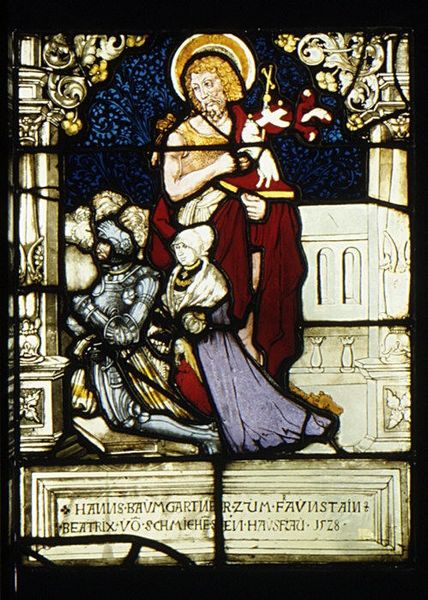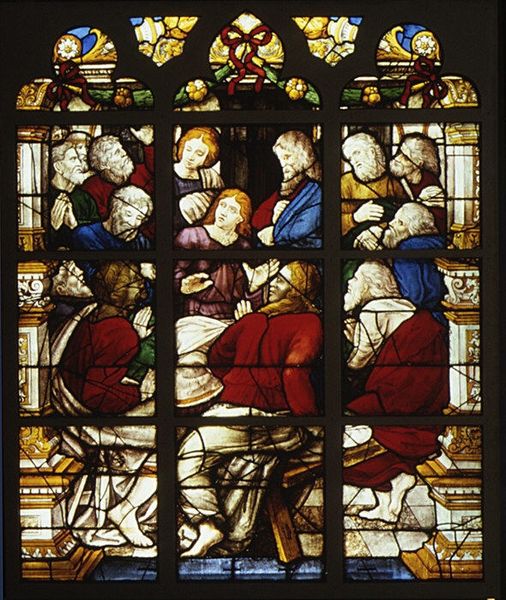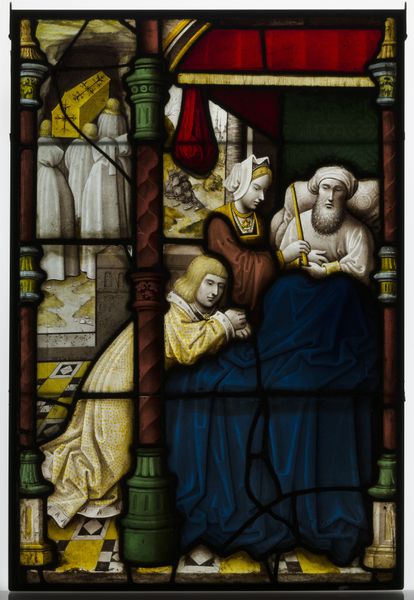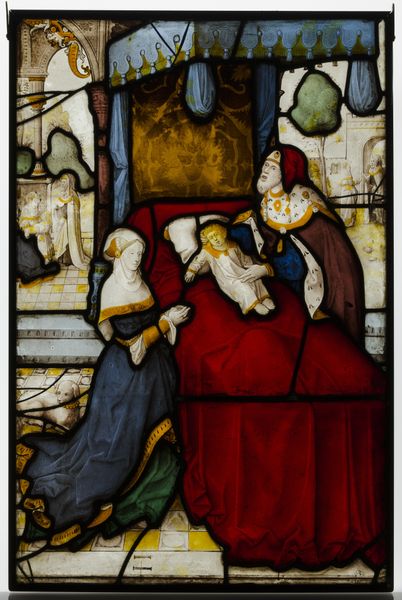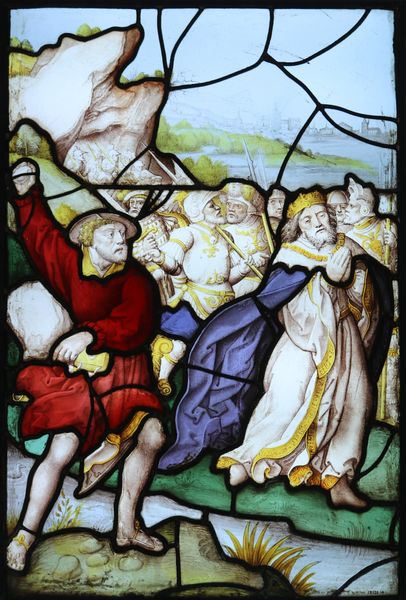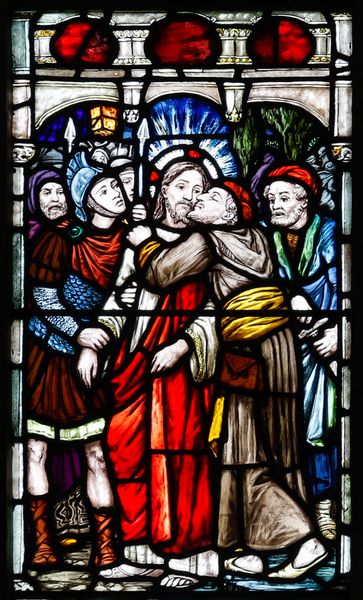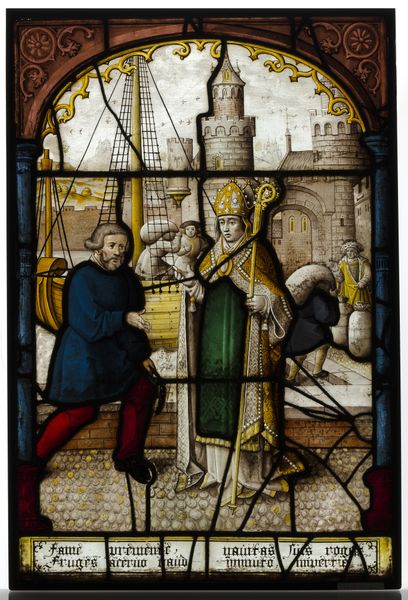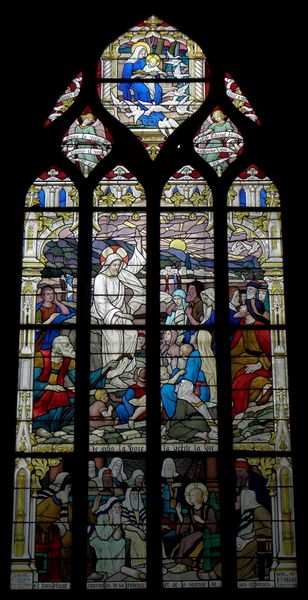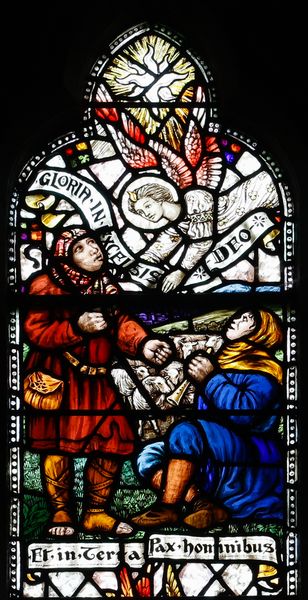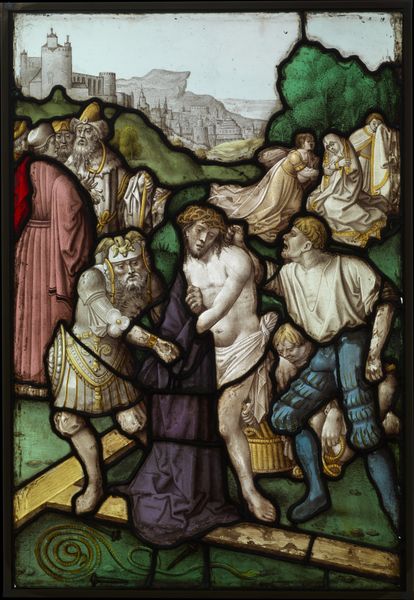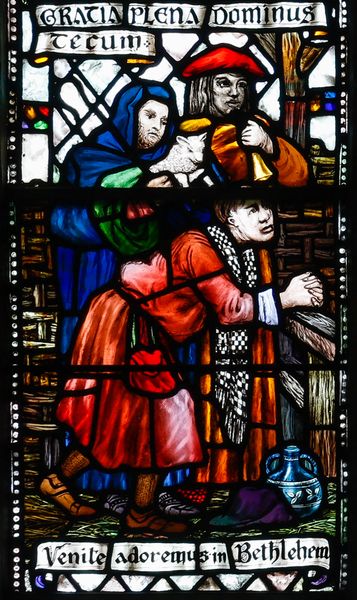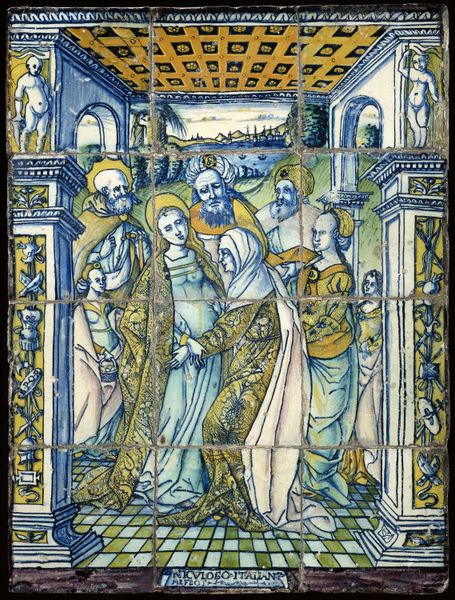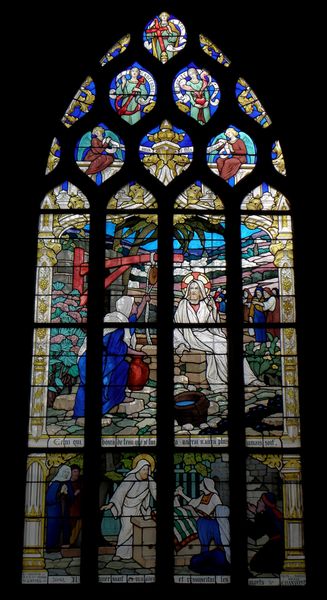
St. George standing behind kneeling donor, Jorig Baumgartner, and his family (one of a pair) 1528
0:00
0:00
tempera, glass, sculpture
#
portrait
#
medieval
#
tempera
#
sculpture
#
figuration
#
11_renaissance
#
glass
#
sculpture
#
history-painting
#
decorative-art
Dimensions: Overall: 30 × 22 1/2 in. (76.2 × 57.2 cm)
Copyright: Public Domain
Curator:Welcome. This stained-glass artwork from 1528, created by Hans Wertinger, depicts St. George standing behind the kneeling donor, Jorig Baumgartner, and his family. It's a vibrant example of Renaissance glasswork housed here at the Met. Editor:The colors are really striking, especially the reds and blues. And there’s so much detail in the figures' clothing and the architectural elements. How do you read a piece like this purely from its formal elements? Curator:Well, begin by noting the strong verticality imposed by St. George and the architectural framework, counterpointed by the horizontal plane occupied by the Baumgartner family. Consider, too, the interplay of light and shadow inherent in the medium of stained glass, used here to articulate form and space. Editor:So the arrangement creates a sort of visual hierarchy? St. George is obviously dominant because of his size and position. Curator:Precisely. The artist uses scale and placement to emphasize the saint’s importance, drawing our eye upward. Then trace the line of sight within the artwork, from the family to St. George. The use of light and shadow around their faces further directs the viewer. Notice how the glasswork technique accentuates drapery folds and contours, conveying a sense of volume and depth. Editor:It’s interesting how much the composition guides my gaze. Are the colors symbolic or simply decorative here? Curator:Color functions on both levels. Note how the limited palette—dominated by reds, blues, and yellows—creates visual harmony and serves to highlight certain figures. Editor:I never thought about stained glass in such structural terms. I appreciate this perspective. Curator:Indeed. Examining the formal aspects allows us to engage with the artwork's visual language directly, fostering deeper engagement.
Comments
No comments
Be the first to comment and join the conversation on the ultimate creative platform.
